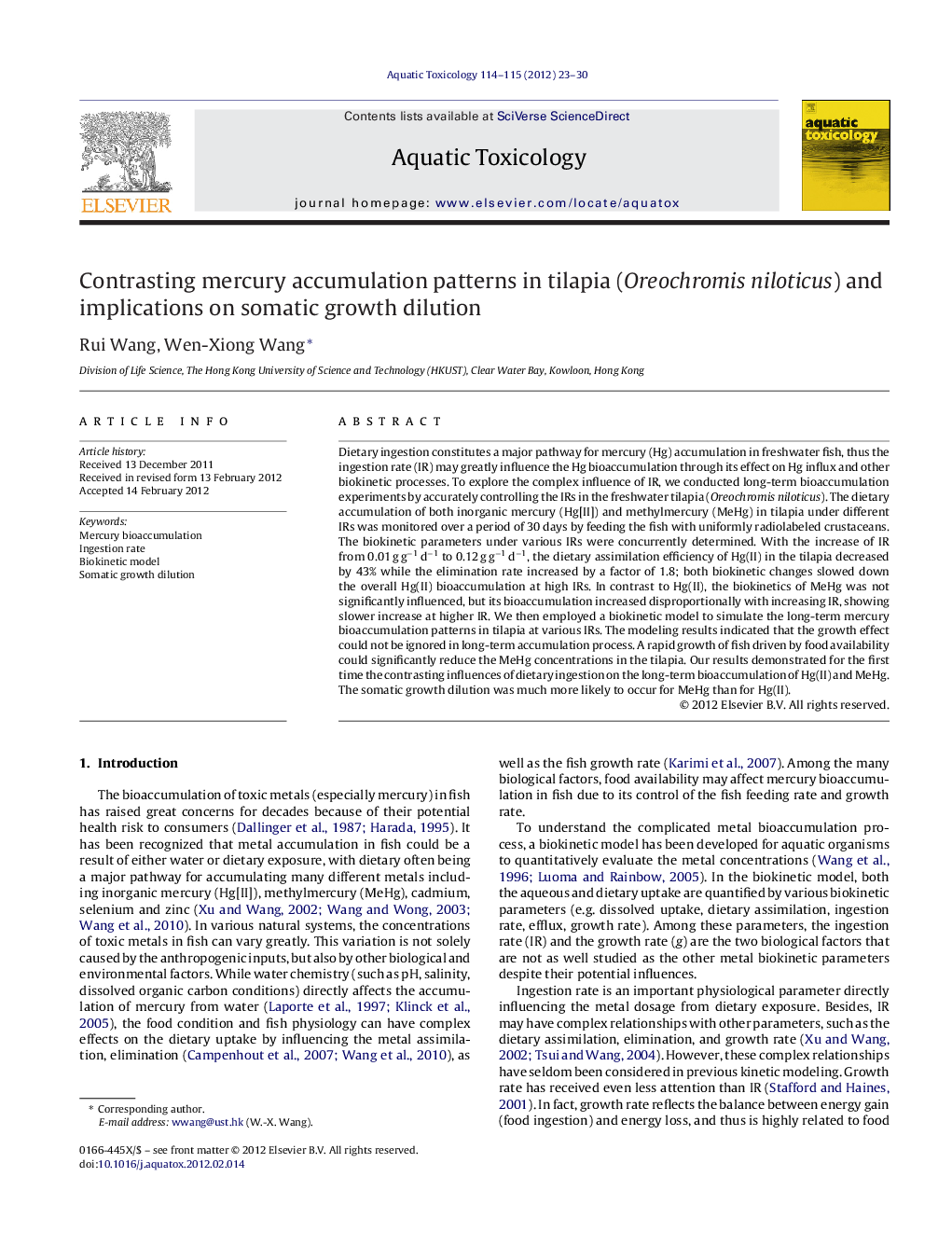| Article ID | Journal | Published Year | Pages | File Type |
|---|---|---|---|---|
| 4529668 | Aquatic Toxicology | 2012 | 8 Pages |
Dietary ingestion constitutes a major pathway for mercury (Hg) accumulation in freshwater fish, thus the ingestion rate (IR) may greatly influence the Hg bioaccumulation through its effect on Hg influx and other biokinetic processes. To explore the complex influence of IR, we conducted long-term bioaccumulation experiments by accurately controlling the IRs in the freshwater tilapia (Oreochromis niloticus). The dietary accumulation of both inorganic mercury (Hg[II]) and methylmercury (MeHg) in tilapia under different IRs was monitored over a period of 30 days by feeding the fish with uniformly radiolabeled crustaceans. The biokinetic parameters under various IRs were concurrently determined. With the increase of IR from 0.01 g g−1 d−1 to 0.12 g g−1 d−1, the dietary assimilation efficiency of Hg(II) in the tilapia decreased by 43% while the elimination rate increased by a factor of 1.8; both biokinetic changes slowed down the overall Hg(II) bioaccumulation at high IRs. In contrast to Hg(II), the biokinetics of MeHg was not significantly influenced, but its bioaccumulation increased disproportionally with increasing IR, showing slower increase at higher IR. We then employed a biokinetic model to simulate the long-term mercury bioaccumulation patterns in tilapia at various IRs. The modeling results indicated that the growth effect could not be ignored in long-term accumulation process. A rapid growth of fish driven by food availability could significantly reduce the MeHg concentrations in the tilapia. Our results demonstrated for the first time the contrasting influences of dietary ingestion on the long-term bioaccumulation of Hg(II) and MeHg. The somatic growth dilution was much more likely to occur for MeHg than for Hg(II).
► Dietary ingestion had a contrasting influences on the bioaccumulation of Hg(II) and MeHg in fish. ► Dietary assimilation of Hg(II) decreased while its elimination increased at a higher ingestion rate. ► The biokinetics of MeHg was not significantly influenced by ingestion activity. ► A rapid growth could significantly reduce the MeHg concentrations in the tilapia. ► The somatic growth dilution was much more likely to occur for MeHg than for Hg(II).
